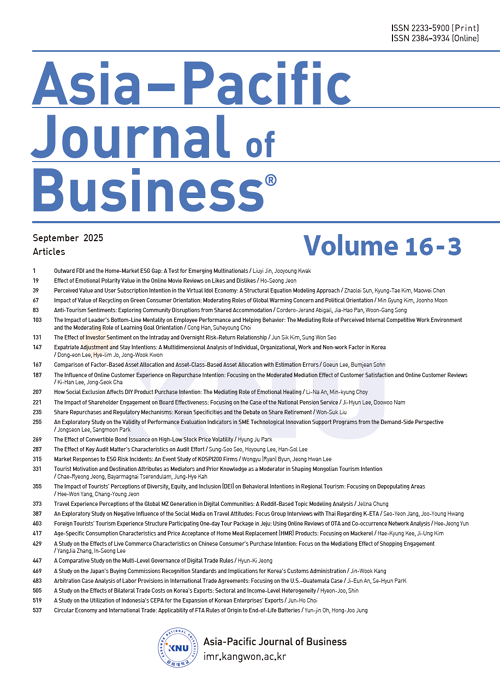가정간편식(HMR) 제품의 연령별 소비 특성과 가격 수용성 분석: 고등어를 중심으로
Age-Specific Consumption Characteristics and Price Acceptance of Home Meal Replacement (HMR) Products: Focusing on Mackerel
- 강원대학교 경영경제연구소
- 아태비즈니스연구
- 제16권 제3호
-
2025.09417 - 428 (12 pages)
-
DOI : 10.32599/apjb.16.3.202506.417
- 3

Purpose - This study aims to understand how price sensitivity and buying habits for ready-to-eat boneless mackerel fillet products differ by age group in Korea’s Home Meal Replacement (HMR) market, and to suggest suitable pricing strategies. Design/methodology/approach -An online survey was conducted with 400 consumers in Seoul who had purchased mackerel in the past year. Consumption habits were analysed using ANOVA and cross-tabulation, and price sensitivity was measured with the Price Sensitivity Measurement (PSM) method. Key indicators such as the Indifference Price Point (IPP), Optimal Price Point (OPP), Point of Marginal Cheapness (PMC), Point of Marginal Expensiveness (PME), Range of Acceptable Prices (RAP), and Stress Factor were compared by age group. Findings - Mackerel was liked and mostly eaten at home across all ages, but ready-to-eat fillets were most popular among people in their 20s and 30s. Price analysis showed that people in their 20s were least sensitive to price, those in their 30s were interested but very price-sensitive, people in their 40s were more flexible, people in their 50s had the lowest willingness to pay, and people in their 60s resisted price changes but ate mackerel most often. Research implications or Originality - The results show that pricing and marketing for seafood HMR products should be suited to different age groups. This research provides practical guidance for setting prices and targeting consumers, not only for mackerel but also for other seafood HMR products, to strengthen market competitiveness and support coastal fisheries.
Ⅰ. 서론
Ⅱ. 연구 방법
Ⅲ. 연구 결과
Ⅳ. 결론
References
(0)
(0)